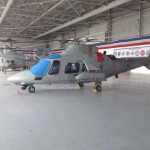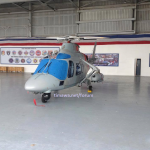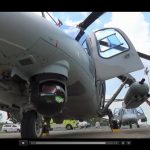
Philippine Defense Today (Adroth.ph)
In Defense of the Republic of the PhilippinesWhat is the FA-50PH really for?
Saturday , 16, July 2016 FA-50, Philippine Air Force Leave a commentThe Korean Aerospace Industries FA-50PH is the single most sophisticated aircraft in the Philippine Air Force inventory. The arrival of the first two aircraft on November 28, 2015 heralded the formal start of the service’s efforts to rebuild it’s air defense operations capability. These two “Fighting Eagles”, as South Korea calls them, were the first of what will ultimately be 12 aircraft. According to multiple PAF sources, two more aircraft are due in the final quarter of 2016, while the remainder will be delivered in 2017 at a rate of one a month.
The aircraft in question appears below. Photographs c/o Lester Tongco, reposted with permission.
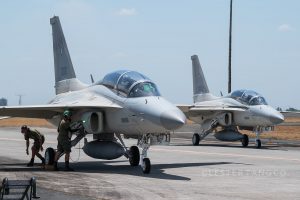 |
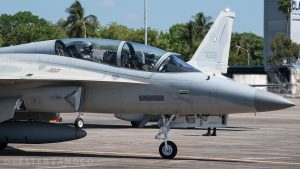 |
The FA-50 represents many firsts for the PAF, to include the following:
- First brand-new fixed-wing combat aircraft acquired since the F-5A Freedom Fighters that were acquired in the early 60s.
- First aircraft with fly-by-wire technology
- First combat aircraft capable of integrating with network-centric warfare environments
- First supersonic aircraft since the retirement of the last F-5A in 2005.
On February 19, 2016, these two aircraft conducted an air interception exercise involving a Philippine Air Lines Airbus carrying President Aquino who was returning from a US-ASEAN summit in the United States. This was reportedly the first intercept exercise of its type attempted by the Philippine Air Force since 1998 using its now retired F-5As. This exercise not only benefited the pilots of the aircraft, but also practiced coordination between air traffic controllers of the Civil Aviation Administration of the Philippines (CAAP) and the PAF’s Air Defense Wing. CAAP and PAF controllers were responsible for tracking the President’s aircraft and guiding the FA-50s to a point where they could use their own radars to find the airliner.
During the PAF’s heyday, in the US-bases funded 60s, such intercepts were part of normal operations for enforcing the Philippine Air Defense Identification Zone (PADIZ). During this period PAF fighters would intercept all manner of aircraft, from Soviet bombers transiting the South China Sea enroute to Cam Ranh Bay in Vietnam, to Air Force One on a visit to the Philippines as shown below.
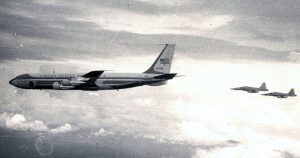 |
| Photograph c/o Francis Neri Albums |
These aircraft, however, appear to have a questionable future under the administration of President Rudrigo Duterte, who raised a firestorm in defense social media circles when he called the FA-50 “useless” at an economic consultation forum in Davao City on the 21st of June
The President had the following to say about the crown jewel of the PAF’s jet-aircraft fleet. Relevant excerpt begins at Time index 36:07:
| Video | Excerpt: | |
| DUTERTE: “You only have . . . what . . . two F-50s? Bakit mo binili yan?
Kayong mga taga Air Force, do not misconstrue my . . . I am a Filipino, I’m a citizen of this country and I have every right to say what I want to say. Sayang ang pera doon. You cannot use it for anti-insurgency which is really the problem of the moment. You can only use it for ceremonial fly-bys. What do I care about <fade out>. Kung binili mo ng choppers na may night vision, you when the kidnapping . . . you could have a catch up those guys There’s only one purpose for buying it. To match the airpower . . . at least 1-on-1 sa China. Pero, beyond that Scarborough Shoal, anak ng hueteng there are 300 Migs there. They can reach Manila in 6 minutes” |
Duterte’s objections to the aircraft are predicated upon three assumptions:
- The FA-50s were acquired to counter Chinese air power in the West Philippine Sea
- FA-50s cannot be used for the anti-insurgency campaign
- The AFP prioritized the FA-50s in lieu of helicopters with night-fighting capability
This article seeks to fact-check these assumptions.
Assumption 1: The FA-50s were acquired to counter Chinese air power
The short response to this would be: “No it is not”.
A detailed answer will require an understanding of what the FA-50 can and cannot do, and a high-level review of the AFP modernization program as a whole. To draw attention to the misconceptions surrounding this aircraft, both among its critics and even some of its well-meaning supporters, this article will begin with what the aircraft can’t do.
Had the Philippine Air Force sought an effective counter to Chinese fighters, the FA-50 would have been a poor choice. In South Korean Air Force service, the Fighting Eagle is a replacement for aging F-5E and F-4 fighters. Both are second-string combat aircraft relegated to supporting roles for Korea’s principal fighters, namely the F-15K air superiority fighter and the relatively smaller — but still formidable — F-16K multi-role fighter.
The FA-50s range is limited. Airforce-technology.com cites a range of 1,851 km for the pure trainer version of this aircraft: the T-50 . While the Fighting Eagle’s actual range is classified, the fact that it’s external dimensions are virtually identical to the T-50, it stands to reason that it’s range would be no better, and could only be worse given the range-sapping external weapons pylons and the weight of additional equipment of the FA-50. In contrast, the smaller of the multi-role fighters cited above — the F-16 — has range of 3,221 km.
To put these figures into a counter-China context, Pag-asa island is approximately 852.77 kilometers from Metro Manila — a one-way flight that’s already almost half the aircraft’s range . This leaves the FA-50 little time to remain on station over Pag-asa before it needs to return to an airfield to refuel. It also has no in-flight refueling capability, therefore to reach, and loiter, over Philippine garrisons in the West Philippine Sea, it would need to sacrifice its precious few under-wing pylons to carrying fuel tanks, much as it did during its ferry flight from South Korea to the Philippines. Fuel tanks in lieu of weapons.
| Landing in Taiwan enroute to the Philippines. Note fuel tanks on the various hardpoints |
The FA-50 is also hampered by lack of manufacturer-certified Beyond Visual Range (BVR) air-to-air weaponry. Official KAI documentation only cites AIM-9 short-range air-to-air missiles as its principal counter-aircraft armament, along with its 20mm gatling gun. While support for longer ranged missiles is not impossible, it will require a compatibility testing process that has not yet taken place.
All these facts inevitably lead to the question: If the aircraft is at such a significant disadvantage when facing Chinese fighters, why did the PAF bother to buy the FA-50 in the first place? Or in Duterte’s words “Bakit mo binili yan?”
The PAF’s long-term modernization program actually calls for the acquisition of Multi-Role Fighters (MRF) that can establish air superiority within the Philippine Air Defense Identification Zone (PADIZ), as well as provide air support for AFP forces on the ground or on water. These would be the “true fighters” that would challenge Chinese Sukhois (not Migs) in the event of escalation of hostilities and not the FA-50.
As per a Department of National Defense White Paper on the Philippine Defense Transformation — the successor to the AFP Modernization Program and the Capability Upgrade Program — the PDT’s goals with respect to air power are as follows:
Strategic Air Strike Force through a combination of manned and unmanned assets in order to gain and maintain air superiority over friendly and contested territories. The force should be capable of neutralizing a threat’s military potential that may be used against our forces; and, of supporting our surface forces through air-delivered weapons. The force should have multi-role fighter aircrafts and unmanned combat air vehicles (UCAV)23 capable of air interdiction, air combat maneuvering, air-to-ground and air-to-ship missions. Inherent to the assigned missions is the training and proficiency of the fighter pilots and operators. Continuous training and participation in joint and/or combined air, land, and sea exercises shall be undertaken towards developing a proficient Strategic Air Strike Force.
While a number of candidates for MRFs have been discussed in Philippine media at various points over the past 6 years — from the Saab Gripen to the Lockheed-Martin F-16 — selection of the actual aircraft has not yet been made. Nevertheless, the nature of the mission assures the following facts about these prospective MRFs will apply:
- There will be a significant performance gap between existing PAF trainers and MRFs. Although the F-5As were retired in 2005, PAF pilots have not been flying supersonic since long before then because concerns about the material condition of the F-5s restricted them to subs0nic flight. This has implications at multiple levels, to include the physical training regimen for pilots that would acclimate to high-g maneuvers.
- MRFs will employ technologies that are generations ahead of whatever currently exists within the PAF. Fly-by-wire, for example, is the gold standard for modern fighter aircraft. This a system of multiple flight-computers that translate what a pilot wants to do, into actual control surface configurations. A pilot’s flight controls are no longer directly connected to the tail, ailerons, and elevators of the aircraft, they simply send requests to the fly-by-wire computers. While relatively common in the civilian airline industry, the PAF has virtual no experience operating — and more importantly maintaining — this technology. Other avionics components present in modern MRFs, from multi-mode radars to advanced low-bypass turbofans, present similar learning curves for airplane handlers — both on the ground and in the air.
- MRFs will require a level of logistical support to which the service is unaccustomed. The quantum leap in capability of MRFs comes at a price, not only in pesos, but also in logistical complexity. The piecemeal acquisition of replacement components and cannibalization of existing aircraft for parts — that have become the norm for the PAF — will have a much more detrimental effect on these sophisticated aircraft than on its existing fleet of Vietnam-era aircraft. This will will require paradigm shifts within the organization, no only for aircraft maintainers, but even the budgetary planners responsible for forecasting logistical requirements.
To ensure a safe, sustainable, transition to this class of advanced aircraft, the Philippine Air Force deemed it necessary to acquire a bridging platform that would help the entire organization prepare for the herculean task of assimilating future MRFs into the fleet. The consequences of transitioning neophyte pilots to advanced MRFs too quickly are illustrated by the accident rate of the Indian Air Force, which is partly attributed to the lack of intermediate-performance aircraft, that the aerospace industry currently refers to as Lead In Fighter Trainers (LIFT).
This search for a bridging platform gave rise to the acquisition project formally called the “Surface Attack Aircraft / Lead-In Fighter Trainer” project. This is an amalgamation of two previously separate projects: an effort to acquire ground attack aircraft which dates back to the original 1995 modernization program, and the relatively new LIFT project. To put the role of the FA-50 into perspective, LIFT will be discussed first.
In the PAF, LIFT fits into the following training syllabus (photos c/o of the Francis Neri Albums reposted with permission):
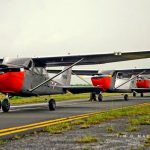 |
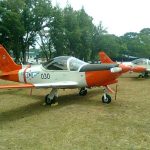 |
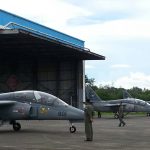 |
 |
 |
||||
| Basic Trainer | Advanced Trainer | Basic Jet Trainer | Lead In Fighter Trainer | Multi-Role Fighter |
Prospective PAF student pilots begin flight instruction with the Cessna T-41s of the PAF Flying School. Pilots that pass the initial screening phase and are destined for fixed wing aircraft proceed to the SIAI-Marchetti SF-260 for more advanced flight instruction. The subset of candidates that are qualified for fighter pilot duty with the Air Defense Wing learn the air defense trade on the SIAI-Marchetti S211 Basic Jet Trainer.
In addition helping new pilots transition to high-performance fighters, LIFT also reduces operational costs associated with multi-role fighters by offloading part of proficiency training to the comparatively cheaper LIFT.
A notable difference with the PAF’s LIFT, compared to similar aircraft in other nations, is that it is combat-capable. South Korea, for example, uses the unarmed T-50 for its LIFT purposes, while using their FA-50s for the above-mentioned low-end attack role. To understand why the PAF went this route, one must understand the service’s experience with its trainers.
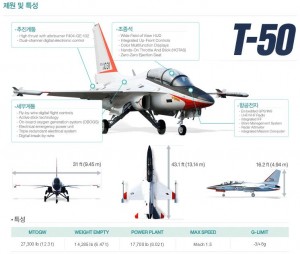 |
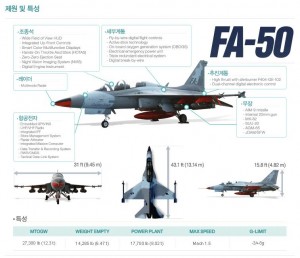 |
|
Training aircraft in the PAF have, historically, found themselves pressed into combat service either to make up for force-deficiencies, or as a stop-gap for a complete lack of suitable combat aircraft. When the T-28 Trojan close air support aircraft were withdrawn from service in the wake of the 1989 coup, select SF-260 trainers were converted into combat configuration. The retirement of the F-5A fighters in 2005 gave rise to Project Falcon, which produced the air superiority-grey colored AS211 which served as the PAF principal “fighter substitute” for almost a decade.
In a move that seemingly accepted the inevitability of history repeating itself, the PAF Project Management Team merged its LIFT requirement with its long-standing Surface Attack Aircraft project. So instead of acquiring a pure LIFT aircraft which would have been limited to flight instruction, the project acquired the FA-50PH: an aircraft suitably equipped to prepare the organization for the arrival of more capable multi-role fighters, with a secondary function of providing ground attack functionality. Like the S211 that came before it, it will also serve as an interim fighter — simply because the PAF doesn’t have anything else that even remotely approximates its capabilities.
Assumption 2: FA-50 cannot be used for anti-insurgency
Unlike it’s air-to-air weaponry, the FA-50 is already cleared to use a variety of ground attack weapons. All of which could be brought to bear in internal counter-insurgency campaigns, particularly against groups with a predilection for constructing defensive fortifications. The most recent instance of military action requiring fixed-wing strike was in Lanao in August 2008 where AS-211s were used.
The FA-50 can carry more ordnance than either the AS211s or the Vietnam-era OV-10 Broncos of the 15th Strike Wing. For comparison, the following table indicates the number of Mk.32 500lb bombs that each plane carries. Data reported from multiple sources within the PAF.
| Aircraft | Number of Mk.82 500 lb | |
| OV-10 | 4 | |
| AS-211 | 2 | |
| FA-50 | 6 |
A brochure from Korean Aerospace Industries gives the following insight into the capacities of the various hardpoints, as well as support for bomb racks on the inner pylons, which makes the six-bomb report possible.
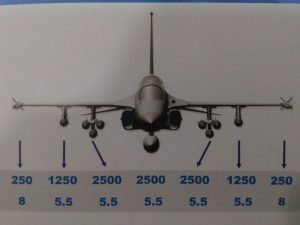 |
While superior bomb-carrying capacity is, by itself, a significant improvement. What sets the FA-50 apart is the increased bombing accuracy because of its avionics. Existing AS211 and OV-10 are largely dependent on the pilot’s aim, and restricted to specific bombing profiles that require flying over the target, at relatively low heights, for manual weapons release. The FA-50s, on the other hand, is not limited to such profiles.
While PAF sources are reticent to discuss these facets of the aircraft openly, the FA-50’s ground attack mission in the South Korean air force, combined with its lineage with the F-16 strongly, as well as open source data about the aircraft’s avionics (e.g., embedded GPS, Inertial Navigation System, Heads Up Display etc.) strongly suggests the presence of computer-assisted bombing capability that greatly improves the effectiveness of conventional bombs. In South Korean service, the FA-50 is equipped with an Israeli-made Elta EL/M 2032 Multi-Mode Fire Control radar system which aviation Website Daegel.com describes as:
The radar enhances a fighter jet’s air-to-air, air-to-ground, and air-to-sea capabilities, enabling long-range target detection and high-resolution mapping, among other features.
This translates to highly accurate “dumb bomb” delivery either via Constantly Computed Impact Point (CCIP) or Continuously Computed Release Point (CCRP) bombing modes. While these two bombing techniques have been in existence for decades, it wasn’t until the FA-50 that the PAF could begin training in them. CCRP would allow the FA-50 to drop its dumb bombs from very high altitude — above cloud cover — and still have reasonable accuracy. The exact Circular Error of Probability (CEP) for bombs dropped in this manner is secret, but will undeniably be less than that of Precision Guided Munitions (PGM) which public sources have cited at 20ft. However, CCIP and CCRP are still used in conjunction with PGMs for situations where guidance for the PGM becomes unavailable after weapons release (e.g., weather interfering with guidance laser, etc.). PGMs are, in fact, best used in conjunction with either CCIP or CCRP.
Purely for perspective, the following are two bombing maneuvers made possible by CCRP. These images were taken from an October 1957 article in Popular Mechanics about computer-assisted bombing in the USAF, purely based on Inertial Navigation Systems, and without the benefit of embedded GPS systems. Note that these samples are purely to enhance appreciation for the flexibility of the technology. It is not a declaration that these are, or will be, part of the PAF’s own Tactics, Techniques, and Procedures (TTP).
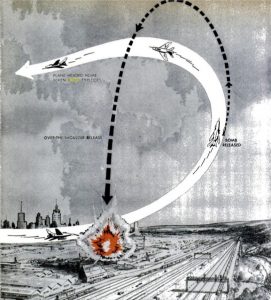 |
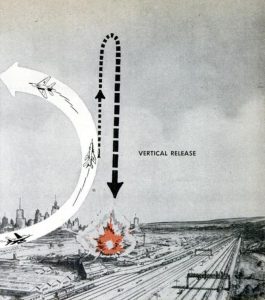 |
|
| Bomb toss | Vertical release |
Furthermore, as per PAF sources, the availability of embedded training systems on the aircraft — which were integral to its training function — permit the simulation of weapons delivery without actually expending ammunition.
Even without either CCIP or CCRP, the FA-50’s superior ordnance carrying capacity translates to more Paveway II Laser Guided Bombs (LGB) that can be brought to be bear on a target for precision targeting of multiple High Value Targets (HVT) with minimal collateral damage. This relatively new addition to the PAF arsenal provides a valuable capability in counter-insurgency, and one that was actually demonstrated in March 2012 reportedly c/o of an OV-10 carrying at least one such weapon. Although photographs of the event have never been release, a PAF modernization document with a photograph of a PAF OV-10 in the process of dropping a Paveway II was circulated in defense social media.
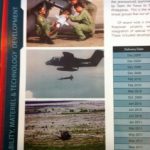 |
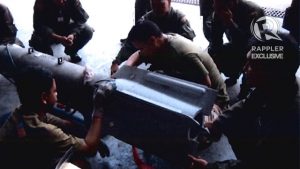 |
|
| PAF OV-10 dropping Paveway II, photo c/o of a PAF pubication | Photo c/o Rappler.com |
Assumption 3: The AFP prioritized the FA-50 in lieu of helicopters with night fighting capability
The AFP has already had five years of the COIN-centric first phase of the Capability Upgrade Program which initially replaced the 1995 AFP Modernization Program. It’s insurgency-focused capabilities are at an all-time high, as are it’s night fighting capabilities. Given that the speech was delivered before the President formally assumed office, and before his formal briefing about the AFP’s capabilities, it is not inconceivable that he was not aware that the Philippine Air Force actually already has eight (8) all-weather AgustaWestland AW-109 attack helicopters with the ability to detect ground targets day or night. These are addition to the two attack helicopters of the Philippine Navy.
High speed photo reconnaissance
The rebuttals to the assumptions listed above have already addressed the question of “What is the FA-50 for?” in broad strokes. This section will explore other uses for which this aircraft is highly suited.
One function that the FA-50 is uniquely suited is high-speed reconnaissance. Not to be confused with maritime patrol, which is slated to be fulfilled by another PAF project, which will be discussed in another article.
No other Philippine asset, military or civilian, can put human eye-balls above a crisis point faster than the FA-50. Be it an emerging crisis anywhere within the Philippine EEZ, or photo reconnaissance of remote disaster stricken areas as part of the preliminary assessment of a disaster response plan.
Although not currently part of the SAA/LIFT munitions project, reconnaissance pods that can provide real-time images to a ground station do exist and could broaden the FA-50’s usefulness. The following pod is an example. Only proper evaluation and testing will determine its suitability for the our aircraft.
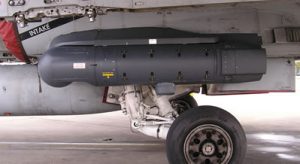 |
| Reecelite Tactical Reconnaissance Pod. Photo c/o Rafale |
Why a brand new plane for LIFT?
Older, 2nd-hand, aircraft to perform the SAA/LIFT function could have potentially been acquired in lieu of brand new aircraft. However the availability of low-use airframes, with sufficient airframe life to satisfy the requirements of Administrative Order 169, Series of 2007 , while not impossible, is questionable.
3.2.3. Used equipment or weapons system may be acquired, provided that:
a. The used equipment: or weapon system meets the desired operational requirements of the AFP;
b. It still has at least fifteen (15) years service life, or at least fifty percent (50%) of its service life remaining, or if subjected to a life extension program, is upgradeable to attain its original characteristics or capabilities;
c. Its acquisition cost is reasonable compared to the cost of new equipment; and
d. The supplier should ensure the availability of after-sales maintenance support and services,
At any rate, right or wrong, the previous administration’s experience with sticker shock at a lackadasical attempt to acquire refurbished F-16s in 2012, soured the DND against refurbished fighters. This ill-fated F-16 project is a story in itself, and is reserved for a future article.
Selecting brand new aircraft, on the other hand, that are still in production not only assures the PAF of thousands of flights hours of useful airframe life — which translates to decades of service — but also of continued availability of parts. A factory-fresh F-16, for example, has a designed airframe life of 4,500 flight hours which, depending on the sortie rate and demands of the mission profiles, will actually last decades.
Delving into the PAF’s history yet again, it was the lack of spares for an aircraft that had long since been retired from service with the country of origin that eventually grounded the most capable fighter the PAF has operated to date: the F-8H Crusader.
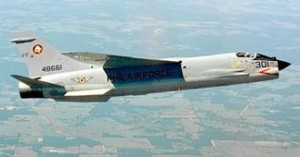 |
||
| F-8H in flight. Photo c/o Vought Corp. | F-8s scrapped in Clark AFB |
Summary
Modernization of an air force cannot happen overnight. Dr Sanu Kainikaa, an air power strategist with the Royal Australian Air Force and a retired fighter pilot and Wing Commander of the Indian Air Force, summarizes this task on page 48 of his book “The Art of Air Power”, published by the Air Power Development Center of the Royal Australian Air Force:
Of all military capabilities, air power is the most cost intensive to develop, acquire and operate. This places an added responsibility on air force leaders to select and maintain the appropriate air power capabilities that will provide the necessary level of security to the nation. The situation is further complicated by the long lead time required to establish air power capabilities of the right calibre. In combination, the onus of responsibility on the air force leadership is ominous. On the other side of the coin, it has also to be emphasised that air power is critical to success in all contemporary conflicts and is, therefore, a crucial element in the overall warfighting capability of a military force.
Another aspect of the cost of developing air power capabilities is the quantum of resources that need to be expended to create a cadre of professionals who clearly understand all aspects of the professional application of air power. This is once again a drawnout process and cannot be put in place at short notice or in an ad hoc manner. Time and experience are of the essence here, perhaps even more than the need for financial resources. The resource intensiveness of the physical assets and the need to invest wisely in long-term developmental requirements—both in hardware and human capabilities—makes air power a unique capability. This also makes it a complex capability to sustain at the necessary level of competence.
Even if it were not the Duterte administration’s intention to pursue the PAF’s modernization during its tenure, it would be behoove his administration to preserve whatever gains had already been made to give future administrations the latitude to fulfill such plans. The momentum that the PAF is gaining with its FA-50s –if not in terms of raw military power, then in the airpower-related skills for the entire organization — must not be dismissed casually.
Had Duterte’s assumptions about the FA-50PH been correct, then he would have been justified in the stance he took at the SMX forum. With an acquisition cost of US$426.6 million (P19.9 billion), these 12 aircraft alone cost more than the budgets of the Department of Science & Technology and Department of Trade & Industry combined. These are funds that could have been put to use to shore up other aspects of the AFP’s capabilities, or kept in the AFP Modernization Trust Fund for use in the purchase of the true MRFs that the PAF intends to buy.
However, re-examination of the rationale behind why the FA-50 was purchased in the first place, its capabilities, and a simple review of the Philippine Defense Transformation program, yields flaws in these assumptions that arguably can be attributed to lack of information. This article was written in the spirit of aiding efforts that the DND, AFP, and PAF are undoubtedly taking to educate the President about the goals of the PAF component of the modernization plan. The sustainable transition to an external facing air defense posture and the future of the Air Defense Command hinge upon the success of this education campaign. It is of such importance that it deserves the support of any and all knowledgeable patriot.
Ensconced within that transition plan is the FA-50PH, and the training benefits it provides both pilots and plane handlers. It would do the AFP well to highlight the safety benefits that a bridging platform offers to pilots to the President. After all, Duterte is a pilot himself.
